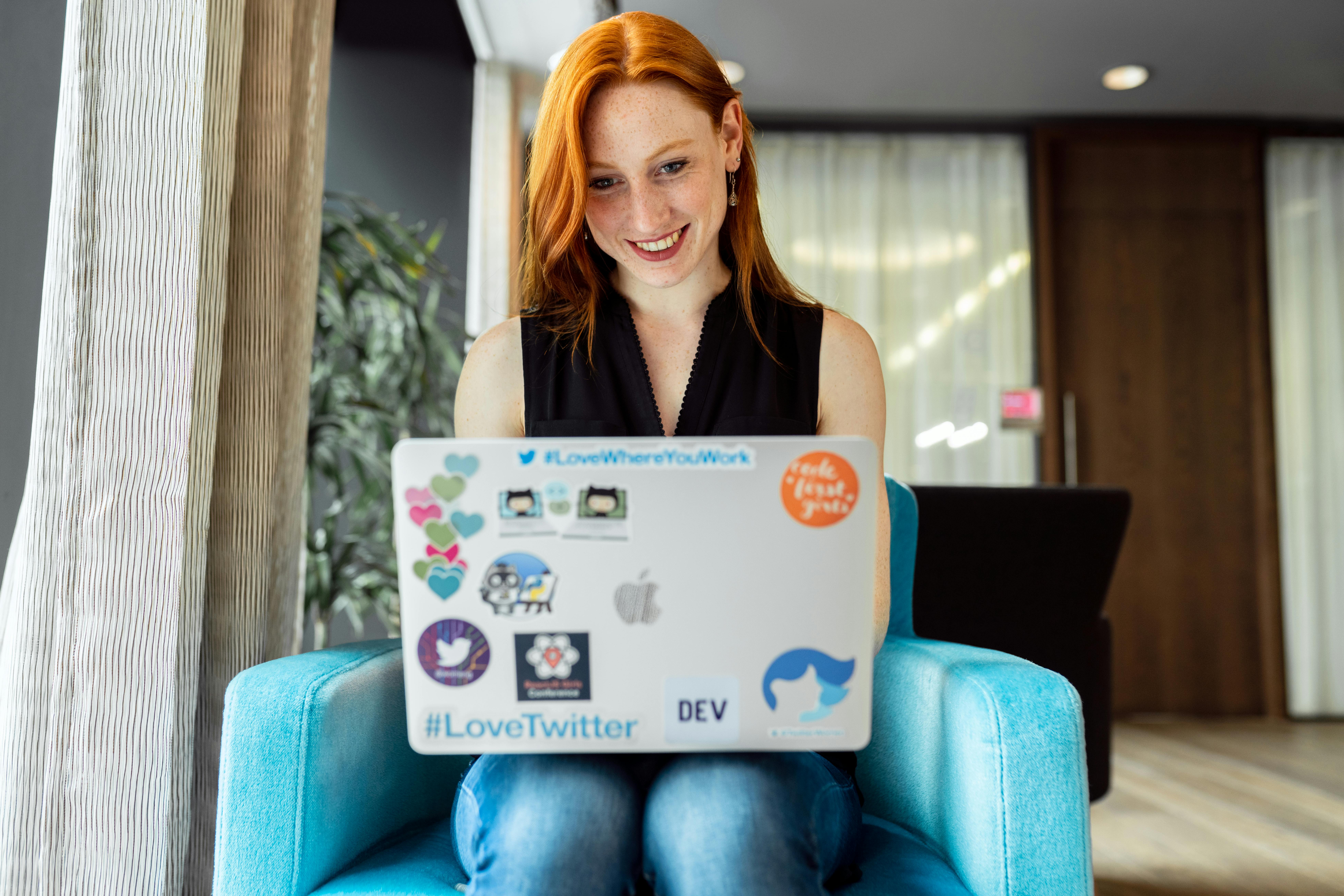Lead Generation
Mastering Sales Funnels in Lead Gen: The Decision Stage
Discover the critical role of the Decision Stage in a sales funnel and learn how personalization, consistent follow-up, and strategic offers can convert leads into confident customers.
Mar 3, 2024

Ever wondered how businesses turn casual browsers into loyal customers? That's where the magic of a sales funnel comes in. It's the journey your leads take, from the first hello to the final handshake. And in the world of lead generation, it's a big deal.
What is a Sales Funnel?

Imagine you're at a bustling farmers' market. Stalls left and right are vying for your attention. Now, think of a sales funnel like one of these stalls, expertly designed to attract you, showcase their juiciest apples, and ultimately have you walk away with a bag full. In lead generation, your sales funnel is the virtual stall where potential leads get a taste of what you're offering.
First, there's the top of the funnel. This is where you spread the net wide. You're calling out to the crowd—through cold emails or LinkedIn messages—letting them know, Hey, I've got something you might like! Here, you're not selling—you're informing. It's like giving out free samples; people can take a nibble with no pressure to buy.
Next up is the middle of the funnel. You've piqued their interest, and they're lingering at your stall. At this point, you dive a bit deeper—share a story about your product, show testimonials, or provide a demo. Just like at the market, this is where you chat up the customer, building a connection. This step's crucial and often mishandled. Don't make the mistake of coming on too strong; it's where you nurture, not nudge.
The bottom of the funnel is where you close the deal. Your lead is now ready to buy, but that doesn't mean the job's done. You've got to make it easy for them to say yes. Maybe offer a one-time discount or bundle, just like the market trader who bundles apples with homemade jam.
Different techniques vary depending on your audience and product. Say you're reaching out via LinkedIn; tailor your message to be more professional than on email. Capture interest with facts relevant to their industry or a personalized connection.
Integrating sales funnel practices means staying adaptable. Be prepared to modify your messages, offers, and tactics based on feedback and results. Regularly cull your email or LinkedIn approaches that aren't yielding clicks or conversations.
Remember, your sales funnel isn't just about making a sale—it's a journey you're guiding people through. With each step, you're building lasting relationships. After all, the best market stall isn't just about the product; it's the experience that brings customers back.
Why are Sales Funnels Important in Lead Generation?
Imagine you're planting a vegetable garden. You can't just throw seeds out and hope for the best. You have to nurture them from the soil up, provide the right amount of water, sunlight, and care if you want them to grow into something you can actually eat. Sales funnels work much the same way with lead generation.
They guide potential customers through a journey that cultivates their interest. Without a funnel, you're just scattering your efforts, which can cause leads to fall through the cracks. By understanding and implementing a sales funnel, you're essentially ensuring that every prospective customer is given the opportunity to bloom into a full-fledged buyer.
One common mistake is thinking once someone enters your funnel, they're guaranteed to pop out the other end as a customer. Not so fast. It's crucial to recognize where people are in your funnel and engage with them accordingly. Don't drop the ball by treating someone who's just learning about your service the same way you would someone who's ready to buy.
Let's talk techniques. There's personalization, where you tailor your messages to resonate with where your lead is currently at. Think of personalization like a GPS: guiding your customer using the route that best suits their needs and current location. Then we have lead scoring—this helps you gauge the temperature of a lead. Are they just window shopping, or are they reaching for their wallet?
To incorporate these practices:
Segment your audience based on behaviors and interests.
Use data-driven insights to tailor your approach.
Engage leads with relevant content and offers at each stage.
Each method has its place, depending on your business type and the nature of your products or services. A B2B company, for instance, might have longer nurturing phases due to the complexity of the purchase, while a B2C company could see quicker transitions from awareness to purchase.
Remember, your sales funnel is living; regular tweaks based on feedback and performance will keep it thriving. Ready to water your garden?
Stages of a Sales Funnel

Imagine you're at a coffee shop and you overhear someone talking about how they increased their customer base. Your ears perk up – because isn't that what you're looking to do through your cold email and LinkedIn outreach? Well, that's where understanding the Sales Funnel really pays off.
First up, there's the Awareness Stage. Picture your lead at the top of a slide; they've just discovered your brand. They might've seen an email header that caught their eye or stumbled upon your LinkedIn post – this is your chance to shine, but don't go in for the hard sell just yet.
Next is the Interest Phase, where your lead is halfway down the slide, picking up speed. Now, they're evaluating what you said, intrigued. So you've got to keep them engaged with valuable content – think eBooks, webinars, or just some good old-fashioned sage advice.
Moving down the slide, we hit the Decision Stage. Here, your potential customer is almost at the end of the slide – ready to decide whether to buy from you or not. It's your cue to present the best version of your offer: a free trial, a consultation, perhaps a limited-time discount.
Finally, there's the Action Stage – splashdown. It's when the lead has gone down the slide and is ready to convert into a paying customer. You've nurtured them well, and it’s time to make it as easy as possible for them to say 'yes'.
Common Mistakes to avoid include not nurturing leads at each stage or bombarding them with too much too soon. It's about balance and timing. Personalization is key; you wouldn’t give the same spiel to a tech guru as you would to someone who’s allergic to jargon, right?
Remember, different techniques work for different stages. Email sequences are great for building that initial awareness, while targeted content marketing can boost interest and decision-making. And if you’re reaching out on LinkedIn, a personal touch goes a long way – tailoring your message can make or break that connection.
When incorporating these practices, consider the journey you're guiding your leads through. Regularly update your strategies based on feedback and performance metrics. Testing and refining are your best friends in this game.
Awareness Stage
Picture the Awareness Stage as the bait you'd use for fishing. You want something that'll catch the fish's eye, right? That's what your content is during this phase—something to get prospects hooked and curious about what you offer. But instead of using just any bait, you're tailoring it to the fish you aim to catch.
In lead generation, common mistakes include casting too wide a net or using the wrong bait. Imagine trying to attract everyone, but ending up appealing to no one. Or suppose the bait is so generic that it gets ignored. To avoid that, you’ve got to know your fish—your target audience—and tailor your message so that it speaks directly to their needs and interests.
Here are some practical tips for the Awareness Stage:
Craft relatable content: Talk about problems your audience faces, and they'll recognize themselves in your story.
Utilize SEO strategies: Incorporate keywords that your ideal customers might use to find solutions to their issues.
Be where they are: If your prospects hang out on LinkedIn more than chilly early mornings by the riverside, that’s where your bait needs to be.
Different techniques work for various kinds of fish. If you’re targeting corporate clients, white papers or detailed reports might do the trick. Conversely, a creative video could be the lure for a more general audience on social platforms.
Incorporating applicable practices involves regularly analyzing the performance of your bait. Which type of content is bringing in the most leads? Are there certain topics or formats that resonate better? Continuous tweaking based on the catch you’re getting ensures you’re always improving your chances of a successful lead generation campaign.
Remember, the Awareness Stage is not about selling. It's about starting conversations and planting seeds of interest that will eventually lead prospects deeper into your sales funnel. Keep your approach informal yet informative, like you're chatting with them at a social gathering, not at a high-stakes business meeting. This way, you build trust and lay the groundwork for a strong relationship with your prospects.
Consideration Stage
Once you've hooked your prospects in the Awareness Stage, it's time to reel them in with the Consideration Stage. At this point, your prospects know about your product or service—they're nibbling on the bait. Now, you need to present them with valuable information that answers their questions and addresses their needs.
Think of the Consideration Stage as the courting phase in a relationship. You're not proposing yet; you're just getting to know each other better, building rapport, and providing valuable insights. Here are a few practical steps to make the most of this stage:
Identify common pain points that your prospects face and craft content that speaks directly to these issues.
Conduct surveys or polls to gather feedback on what your audience is truly looking for.
Host webinars or live demos to engage with your prospects and showcase how your solutions can solve their problems.
A common mistake during the Consideration Stage is bombarding prospects with too much information or hard-selling tactics. Instead, your aim should be to guide and educate. Be the gentle current that nudges them along, not a tidal wave that overwhelms.
Different methods work for different businesses. Perhaps a series of educational emails with case studies work for B2B, whereas interactive quizzes might be more engaging for B2C audiences.
To incorporate these practices effectively:
Tailor your outreach. Personalized emails with a touch of storytelling can perform wonders.
Track engagement data. See what types of content generate the most interest and double down on those.
Take advantage of retargeting campaigns to stay top of mind with prospects who've shown interest.
The key is to maintain that connection and keep prospects moving through your sales funnel. With finesse and strategic planning, you'll continue to build on the trust you've started to establish, nudging your prospects closer to making a decision.
Decision Stage
At this point in the sales funnel, you're at a critical juncture. Think of the Decision Stage as the moment in a game show where the contestant decides which door to open. Your lead is behind one of those doors, weighing their options. They've been courted and educated, and now, it's decision time.
One common mistake is assuming the lead will naturally progress to a sale. Imagine if that game show host just vanished, leaving the contestant to make a blind choice. Not very helpful, right? Likewise, you need to guide leads towards a clear, confident decision—your product or service as the winning choice.
Here's where personalization pays off. Imagine you're in a coffee shop, and the barista remembers your order. It feels good, doesn't it? Apply that feeling to your outreach—personalized emails, tailored solutions, and a keen understanding of their unique pain points make all the difference.
Techniques differ, from direct phone calls to crafting in-depth proposal documents. Picking the right one depends on your lead. Are they detail-driven and analytical? Detailed proposals may shine. Prefer a human touch? A friendly call could be the key.
Practical tips? Keep track of your interactions. If your lead opened several emails about a specific product, tailor your approach accordingly. Use every bit of data to your advantage; it's the breadcrumbs that lead to their expecting needs and preferences.
Incorporate practices like:
Consistent follow-up: Just as you wouldn't forget to water your plants, don't forget to nurture your leads.
Use case stories: Share examples where your product made a measurable difference. It's like telling a friend about a movie you know they'll love.
Limited-time offers: Sometimes a little urgency is like that final nudge to jump into the pool on a hot day.
Remember, the goal here isn't to pressure but to reassure. Your lead should feel they're making the best possible choice, one that meets their needs and alleviates their initial pain points. Keep channels open, the conversation flowing, and the rapport strong. They're just a step away from saying yes—make sure they know why it'll be one of the best decisions they'll make.
Conclusion
Mastering the Decision Stage of your sales funnel is crucial for converting leads into customers. By implementing personalized outreach and strategic follow-ups, you're setting the stage for success. Remember, it's about making your leads feel secure in their choice. Use case stories and time-sensitive offers can be powerful tools in tipping the balance. Now that you've got these insights, you're well-equipped to refine your sales funnel and boost your lead generation results. Start applying these tips today and watch your conversion rates climb.
Frequently Asked Questions
What is the Decision Stage in a sales funnel?
The Decision Stage is the point in a sales funnel where potential customers evaluate the available options and decide whether to make a purchase. Similar to choosing a door in a game show, leads must feel confident in the choice they make.
How can personalization affect the Decision Stage?
Personalization can significantly impact the Decision Stage by making leads feel valued and understood. Tailoring communications and proposals to meet the specific needs of a lead can lead to more confident decision-making.
What techniques can be used to influence the Decision Stage?
Effective techniques at the Decision Stage include direct phone calls, detailed proposals, and sharing success stories or use cases that resonate with the lead's situation. The approach depends on the individual preferences of the lead.
What are some practical tips for the Decision Stage?
Practical tips for the Decision Stage include consistent follow-up to keep the dialogue going, sharing customer success stories to demonstrate value, and offering limited-time discounts or incentives to create urgency.
Why is reassuring leads important at the Decision Stage?
Reassuring leads is crucial at the Decision Stage because it helps them overcome any last-minute hesitations or objections. Making them feel confident in their decision can encourage them to choose your product or service.

